If you knew Darwin, Australia you wouldn’t think surfing. If you knew Darwin, you’d know not to swim in the ocean. You’d know about the crocodiles. You’d know about the box jellyfish. You’d know about the danger. What you probably wouldn’t know about are Darryn and the waves. Give Darwinians a few more years… they’ll know.
Located in the remote Northern Territory, Darwin is where Darryn Quigley runs a thriving Learn to Surf program with ever-increasing demand. Quigley, owner of Darwin Surf School and Managing Director of Solitary Islands Surf School in New South Wales, describes his relatively new age approach to surf coaching as his “passion project” – something that he is always tweaking, amending, and improving. What sets him apart from most operations in the market is the lack of salt. DSS run their lessons in the Wave Lagoon at Darwin Waterfront, where gentle rolling waves provide a perfect setting for young participants to build their water awareness and confidence through wave riding. While the pool may not generate world-class waves, the ones that do sweep through that long stretch of water do the trick. By the end of the day, thanks to Darryn and DSS, more children are turned on to surfing in a region where surfing has no business even being considered.
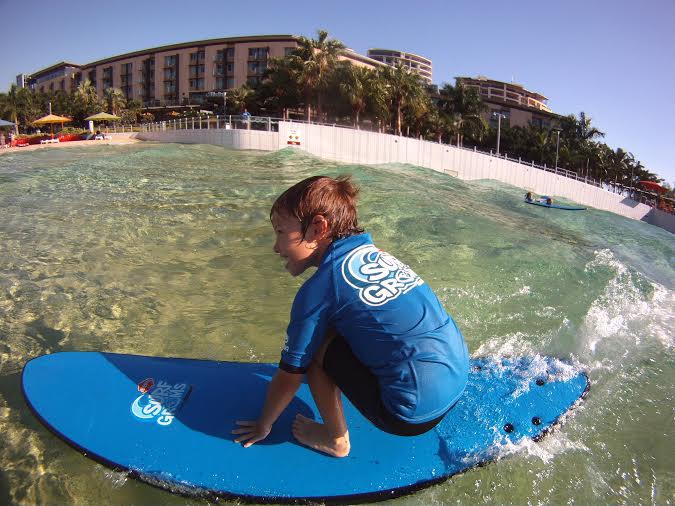
While measures are in place to protect people from the swarming dangers of the ocean here, it would be an understatement to say that surfing wasn’t on the radar. It would be an understatement to say that the city’s inhabitants aren’t beach-going people like those on the Gold Coast and in Sydney, whose weekends are consumed by sand, swell, and sunshine. Sure, there may be a few of those types up in Darwin, but it’s simply not part of the culture. And while DSS may not change that, what they are doing is providing a means for children to see the possibilities of what is out there. While they may never be able to surf in their own backyard, these kids will always know that they could go on holiday with their family one day to Surfer’s Paradise, to Byron Bay, or to Sydney’s Northern Beaches, and they would be well prepared.
In speaking with Darryn, we’ve been able to get a better glimpse into how and why his program runs so effectively, about the challenges and the advantages of running Learn to Surf Lessons in a wave pool, and about what it takes to make such a venture financially viable. Ahhh, good old financial viability again… the deal breaker or maker. As we know in today’s wave pool world, not only is science posing issues and outlets, but so too is the financial side of things. The waves are there, but how is the money generated to an extent that a business can run and make profit? In Darwin, at the Wave Lagoon, we’ve learned that keeping things simple is the way to go – that is, as far as surf lessons are concerned. We’re not talking about treating advanced surfers to world class waves here. We’re talking about learning to surf. No, we’re not talking about barrels. No backhand snaps. We’re talking about gentle, rolling lumps. We’re talking about practice. Practice, man. Practice.
SurfParkCentral: Give us a bit of background on the Darwin project. How did it all start? How has it progressed?
Darryn Quigley: I had been dreaming about putting this whole thing together for years, but it really only took 6 months to get the program up and running. It took quite a bit of convincing with Darwin Waterfront as well as Surf Lifesaving Northern Territory (SLSNT), but once we proved to them that it was viable and safe and got everything off the ground in 2012, things ran pretty smoothly. We have put in place effective risk management guidelines, and now that we’ve been doing it for a few years now, we have these lessons down to a science. Before we came in, there was in fact another surf school that approached the same people that we spoke with about setting up an operation, but their risk and safety guidelines and strategies weren’t up to par with what is required. So there was a bit of hesitation from the people in Darwin at first, but once we got everything going and people saw what we were all about, there was no looking back.
SPC: And the program… How have you organized that?
DQ: We offer our Learn to Surf program seven weeks out of the year, at various times of the year, and only to kids aged 12 and under purely because the waves aren’t very big… they’re not the most performance-driven waves. The power that this wave generates is very conducive for teaching younger children. While adults can indeed ride, they may find it a bit more challenging due to the weakness of the wave. Because of this, we use 8 foot longboards in the water for the vast majority of novice participants, whereas in the ocean, we can get away with 6 foot boards. This is for the simple fact that this wave in the pool doesn’t have as steep of a face, so they need that extra bit of volume. When we are using the pool, it is closed to the general public, so we are the only ones in the water at that time. This is essential because you truly need that exclusivity to run an effective operation. If we were jostling for position with the general public, it would be a nightmare. Each session has 12 participants and lasts for two hours: 1 hour consisting of exclusive surfing time in the wave pool, and the other is made up of teaching techniques and water safety in the Recreation Lagoon, an area that is also cut off from the ocean and what lives in it. There, we use bodyboards and discuss wave types, how rips and winds affect water conditions, and general safe practice in the water. There is actually a small rip that runs down the side of the pool, so it’s great that we are able to provide them with a good knowledge base as well as giving them significant time in the waves. I can only put 12 kids in the water at once, but we can’t go over those numbers because it would be too chaotic. And that’s where we enhance our product quality. If someone tried to run a similar program during the hours when the pool was open to the general public and just crammed them all in there, it wouldn’t even get off the ground. It needs to be exclusive.
SPC: So you guys must be pretty popular up there… plenty of community support I’d imagine?
DQ: We are fully booked for all 7 weeks. I’ve had to implement a waiting list to get kids into the program because there is that much of a demand. They absolutely love what we are doing up there… a lot of positivity. Every time I go up there it’s completely booked out and I have people begging me to squeeze them in. Quite a lot of these kids in Darwin have little to no ocean experience because of the crocodile and box jellyfish situation. So it’s that much more rewarding to provide this program to these children who would otherwise never have the opportunity to learn to surf.
SPC: Can you describe the wave pool in Darwin for us? Obviously, we’re not talking big, powerful waves here…
DQ: That’s right, they’re not… more like these meter high lumps. But to be honest with you, for what we are doing, and what we are trying to accomplish, it’s perfect. If they were any bigger, or any less frequent, we would not get the same success rates. Remember, we’re teaching these kids that have absolutely zero experience, not only with surfing, but generally with the ocean as well. As far as the pool itself is concerned, there are only three seconds between each wave. So that’s twenty waves a minute. And because of this, these kids catch that many waves it’s not even funny… never-ending smiles, mate. If a kid has heaps of energy he/she just dominates… paddles out to us, we push them in, surfs all the way to the 1 meter mark, and then out they come again.
There are 10 different wave settings in the pool, but I only use about three of them. The main differences are in the height and angle of the wave, but they are only slight. On the biggest setting, the wave runs down the side of the wall, and only breaks along half of the pool. The other side of the pool is flat, so we get these great circular cycles going… these kids just get wave after wave, walk or paddle over to the other side of the pool, and paddle right back out.
The waves run for twenty minutes, and then the pumps reset, so we have ten minutes of teaching time in the pool when it’s flat before the waves start up again for another twenty minutes. In that time, we can easily go through what they need to work on, different techniques, etc. And by the time the waves come on again, the kids are ready to go and they are easily correcting the things they’ve done incorrectly. I reckon the twenty minutes on, ten minutes off cycle is perfect, because the kids wouldn’t be able to handle it if it were longer.
SPC: What are some of the challenges you face in the pool compared to the ocean? Are there issues that arise that wouldn’t otherwise occur in the ocean?
DQ: The biggest challenge with teaching in a wave pool is the depth, not only for us instructors but the students as well. Where we begin pushing them onto a wave is at the back of the pool, where it is nearly 2 meters deep – almost up to my head. So it can be a bit tough to generate enough power to continuously push the kids into these waves. Some can paddle in but most need that extra bit of encouragement. For some, it’s tough to get a rhythm going because of this. With the way the pool runs, it’s almost like going out into the ocean with a serious windswell, where judging the waves can be a bit of an issue.
The kids as well struggle with this at times, as many do not feel comfortable being in deep water. Every time they fall off, they are not going to be able to touch the bottom. We’re not allowed to have legropes in the pool, so we teach them to swim to the flat side to our second coach who is nearby with an extra board, while the third coach in the shallows corrals the boards that have come in. Additionally, when they ride a wave in, we have to be careful about having them get off the wave before it gets too shallow. The bottom of the pool is a pebble-concrete bottom, so the potential is high for some minor scrapings to occur as they move towards the shallower water. Comparatively speaking, in the ocean – not the ocean here in Darwin though, I’m talking back in New South Wales – we can operate at much shallower depths, normally around waist deep. Physically it is easier on us, and mentally it is easier on the kids.
SPC: Advantages?
DQ: We pretty much have 100% success rate. I have gotten to the point where I know how these waves work, so I have it set up perfectly with a person out the back pushing the kids in, one in front of the wave coaching, and sometimes a third near in the shallows to help them get off the board safely at about a 1 meter depth. Once you get these cycles going, it becomes easy and they just ride one after the other… especially when you get returning participants who have done it before and know how everything operates. They’re just so quick to pick it up and improve as the lesson progresses because of the cyclical nature of it all, whereas in the ocean, there’s lulls, currents, set waves, winds, and animal life to deal with. Basically the uncertainty of the ocean becomes the major flaw. In the pool, it is the same thing over and over and over. And this is why kids get such good value for money in the pool. The result is that we see a higher learning curve because of this definite nature of the pool. Plus, it’s nearly impossible for the kids to nosedive on these waves because the wave is so gradual and not even half as steep as an ocean wave. Overall, we have far less injuries and incidents.
SPC: So, would you say the pool is far safer than the ocean?
DQ: That one’s hard. With the way our current risk management techniques are set up, and considering what could go wrong in both settings, I’d say the pool would be safer, but perhaps not by much. The pool itself is surrounded by concrete. The bottom is concrete. The walls are concrete. I’d like to see some sort of rubber composite to replace that for obvious reasons. While we have had no major incidents in the pool, without proper safety and lesson management, the chances of accidents increase due to these hard surfaces being all around us. But in saying that, the overall environment is a bit more controlled, more definite. The unpredictability in the ocean is the issue. As you know, so many things can go wrong out there. We do everything we can to make the pool safe. Our coaches are always keeping an eye on the kids and the walls, and again, getting back to these cycles – because everything is so fluid we can anticipate and react to potential problems far easier that we can in the ocean. Specifically to our program, if a participant is under the age of 8, I allow the parent to help in the pool as well, simply to keep the child more at ease. Everybody wins.
SPC: Taking all this into consideration, would you personally rather give lessons in the pool or the ocean?
DQ: You can never replace the ocean, from a purists’ point of view. With the wave pool, we have to be more creative in what we teach. We teach a lot of different skills that we wouldn’t even touch in the ocean. We basically are trying to create excitement about what we are all doing, whereas in the ocean, there are so many different skillsets to develop and there is way more to learn. The problem with the pool is that there are more limitations. What I mean by that is, as far as surfing goes, they pretty much go straight in the pool. There’s a bit of turning they can do on the bigger wave setting, but they obviously cannot take it as far as they could otherwise. While it’s fun and exciting, they wouldn’t have the opportunity to work on turns and tricks like they would be able to at sea. In the pool, where they go and what they can do on the wave is far more limited. So it is really hard to say, as a blanket statement, which I prefer more. There’s parts of coaching in the pool that I find to be great advantages, but there is also so much that the ocean has that the pool cannot replicate.
SPC: And what about on the business side of things… pool or ocean?
DQ: Well, it’s not cost effective for the facility to close the pool to the general public just for us to run our 12 person lessons. As far as sheer numbers are concerned, there will always be more people who will want to swim in the pool per hour than those that we can cater for in a surf lesson. We are lucky because we have access to the pool before it is opened to the general public, so that is why we can do what we do. To be honest, on a business level, it’s not something we make huge profits on. It is more of a passion project. But again, to make a general, overall statement is tough – it really depends. Generally, we incur a higher cost in the pool. I have to pay for a lifeguard, because Darwin Waterfront has its own set of regulations. I also have a contract with the pool there, so there are some fees involved in that. When we run our lessons in the ocean, we still have to worry about getting the permits organized with the councils to be able to run lessons on different beaches in the area. To provide the best service, we need to have access to several beaches which all have different conditions on any given day. So we pay for it in that respect. So now that I think about it, running lessons in the pool can be cheaper in some respects. Both have their pros and cons.
SPC: In your opinion, would you say that Learn to Surf operations at these low end wave pools are financially viable?
DQ: Specifically with Darwin, it is a very isolated city. This makes it a challenge on so many different levels to run a profitable venture. Everything is more expensive: I have to fly up there to be a part of it, I have to pay for accommodation… we only run the program when I can get up there. However, we can charge more for the programs in Darwin than we would here in New South Wales. If we tried to charge that same amount here, we wouldn’t have people showing up. So the short answer, specific to us is ‘Yes.’ We make decent returns, but that’s only because of how we’ve come to set everything up.
The whole issue of cost effectiveness is the hardest thing to get my head around. Even those wavepools in Dubai and the Wavegarden in Spain… I think that’s amazing, but it’s hard to see how it will all become cost effective – and I’m not talking just for the operators of the facility, but if a company like ours were to go in there and try to run a kids surfing program with lessons and all that, there are so many challenges – many of which I’ve previously mentioned – that we’d have to face to make a decent return. And trust me, that’s not what it’s all about. It’s about seeing those kids happy, but at the end of the day, you must have at least something to show for it.
If we were to move on with another project in another region of the country, in order see greater returns, we’d realistically need to rent a percentage of the space at the facility on a full time basis. Think of these big waterparks with those wavepools… it wouldn’t make sense for the facility to shut down just so we could run lessons. There would be a fraction of the people using the space, resulting in a fraction of the income generated – similar to what is happening in Darwin. That’s why we are lucky up there, being able to run our program before anyone else is even allowed in the water.
The thing that I think would work best for these large scale waterpark facilities that are looking to provide surf lessons would be to hire a company like ours to act as an outside consultant. We could go in there, set everything up regarding the structure and financial side of things, show them how the program needs to be run in and out of the pool, teach them the techniques, and then allow them to hire their own staff. To make it more financially viable for all parties, it would be best to fill the roles within the surf school internally, as opposed to having an outside company come in and try to run a separate show. In saying all this, the Darwin facility is small enough to have it running exactly as it is now. Both sides are very happy with where we are at now, and we look forward to making that program up there bigger and better. We are cost effective in Darwin. But when you are talking about these bigger facilities like the one on the Gold Coast… for an outside company to come in and run their whole show separate to the facility is a bit unrealistic in terms of functionality and financial viability.
One way in which it could work, however, is to offer a Learn to Surf program in the winter months when there are far less people at the park in the first place. There could be an opportunity there for the facility to restrict access to the pool, and allow for surfing only. If this were to happen, then it could make sense for an outside company to come in and set things up because there would be that much more water time available. They could really target the school group market during these months, and offer the program almost as a novelty during these colder months.
SPC: What is it going to take to be able to run the program more frequently?
DQ: The simple answer is staffing, but so much more goes into it. I do have some staff in Darwin that I have trained personally but they are only employed on a casual basis and are not always available. I have sent our staff from NSW to help, but it gets to be too much on the travel and accommodation costs. When we ran the program when I wasn’t present, the product quality lowered and the feedback was not as positive. This is definitely an area I am working on for the future. Also, working with outside parties like SLSNT and Darwin Waterfront is only easy for me to manage when I am present, face to face. I think if we were to do something similar in a place like Sydney, all of these hurdles would not be as big. So maybe even the better answer to this one is: location.
SPC: What are your thoughts on the future of wave pools and surf parks?
DQ: It’s beyond exciting mate. I think there is so much opportunity there on so many different levels. Where we operate is nothing remotely close to what is happening at the Wavegarden, but even at a place like that, with proper waves, you could set up an effective, yet completely different, Learn to Surf program. While the experienced riders could ride the barrels out the back, you could have the learners on the inside getting taught on the waves that have already broken. So you could obviously utilize two different areas of one single wave, and generating two incomes in one. There could be a real hands-on, advanced techniques training session with the intermediate surfers out the back while the learners could ride the left overs. And now that I say that, it would be just like the ocean, where the true surfers are out the back, and the lessons are being taught with the instructors on the inside. Having those guys out there though obviously helps those learners get excited about what they are doing, and gives them something to push for.
I’ve seen what Webber Wave Pools are doing now, and I think they have it set up perfectly… for a man made wave, it’s incredible. You see that wave and just think to yourself, ‘Why isn’t that everywhere,’ and you really do realize that it all comes down to cost effectiveness.
SPC: Any new upcoming projects we should know about?
DQ: We definitely have a few things that we are working on as we speak, not only with setting up programs at other small scale wave pools, but also with incorporating stand up paddleboarding into our programs that we already have in place. I think that the stand up revolution is upon us, and there is so much that can be done in that realm. It’s going to be very interesting to see where this new avenue takes us. Can’t reveal too much though mate, you know how it goes!
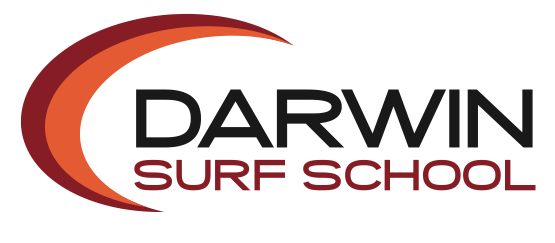
“[Darwin Surf School] provides an invaluable program for the local community in Darwin and has been very well received since inception at our Wave Lagoon. The program has appealed to a wide demographic and has directly resulted in repeat visitation and increase in visitor numbers to our facility. The program’s success is not only attributed to the fundamentals being taught, but how it is delivered through their high quality coaching staff.” Alana Madden, Events & Marketing Manager, Darwin Waterfront Corporation.
Darryn Quigley can be reached at [email protected], and welcomes any questions and feedback.

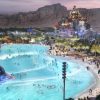
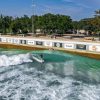
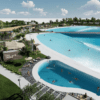
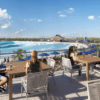
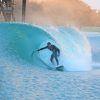
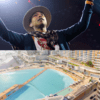
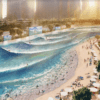
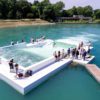
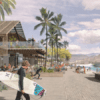
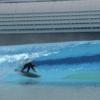

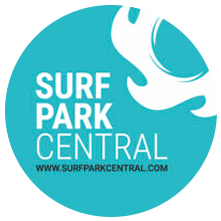


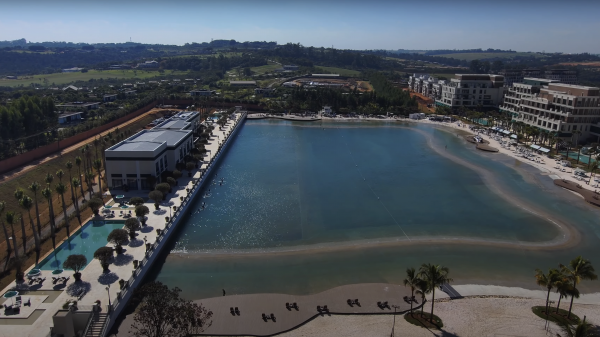

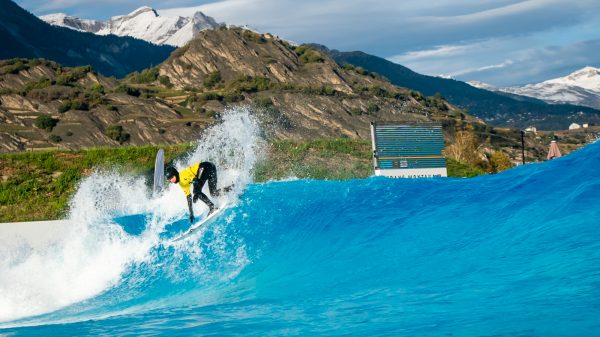
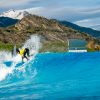
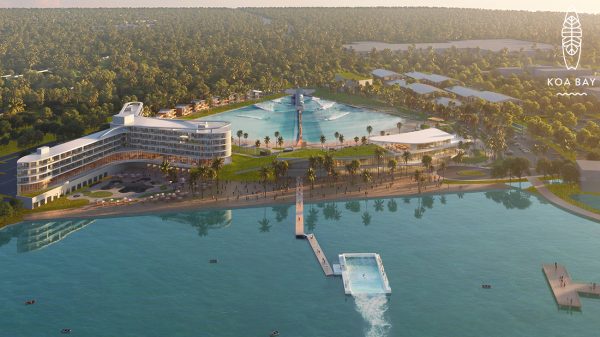
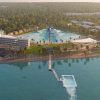
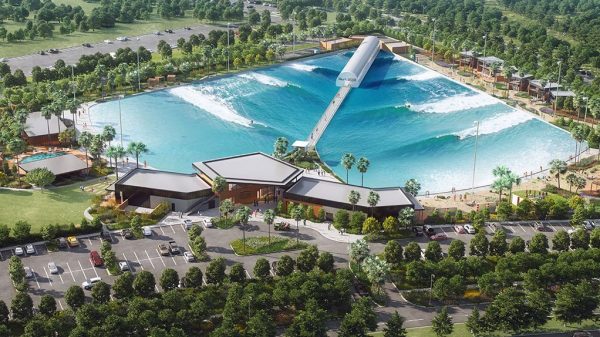
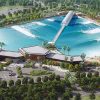
You must be logged in to post a comment Login